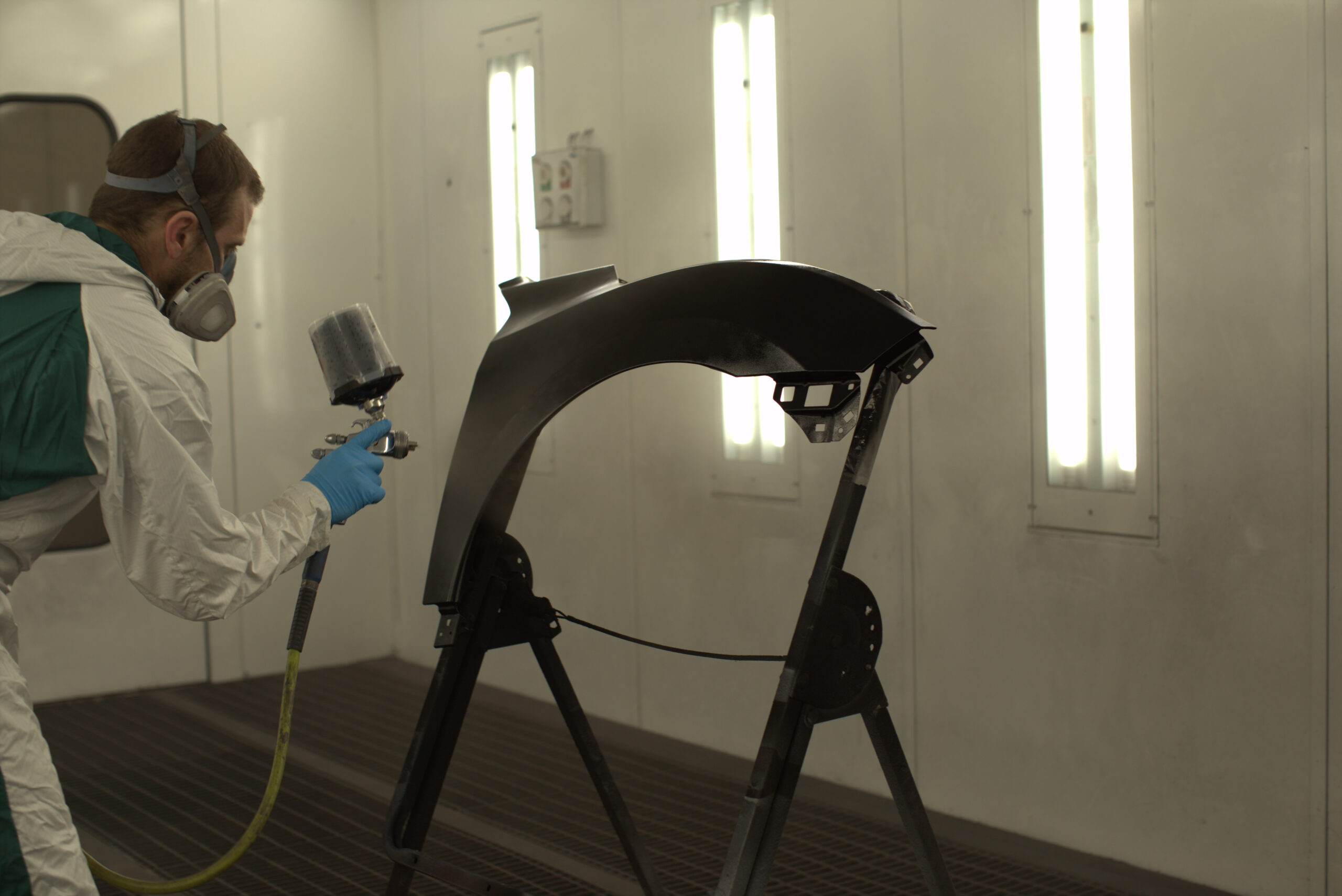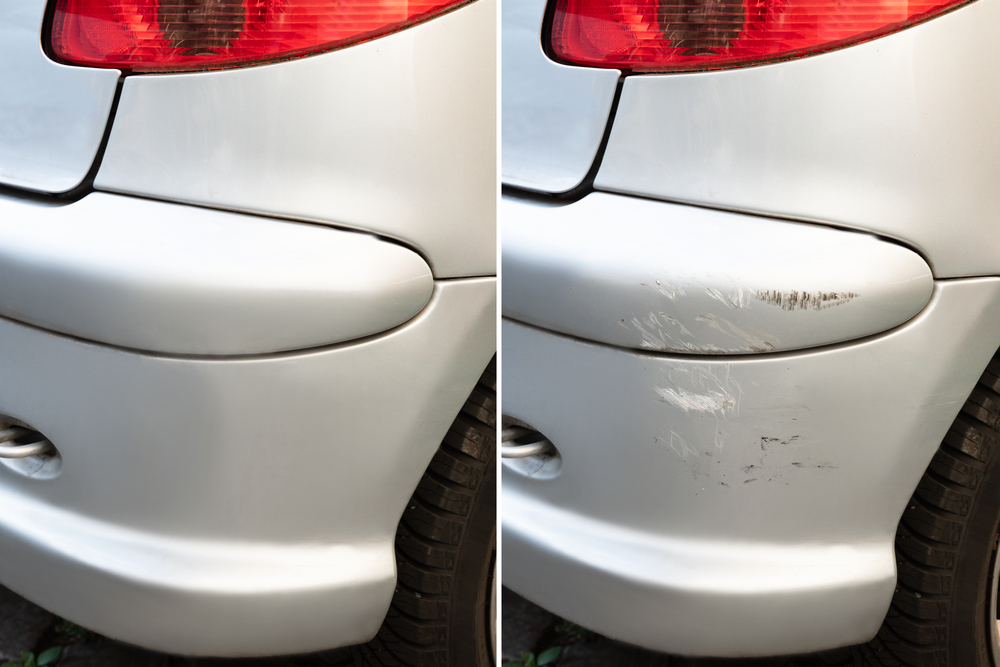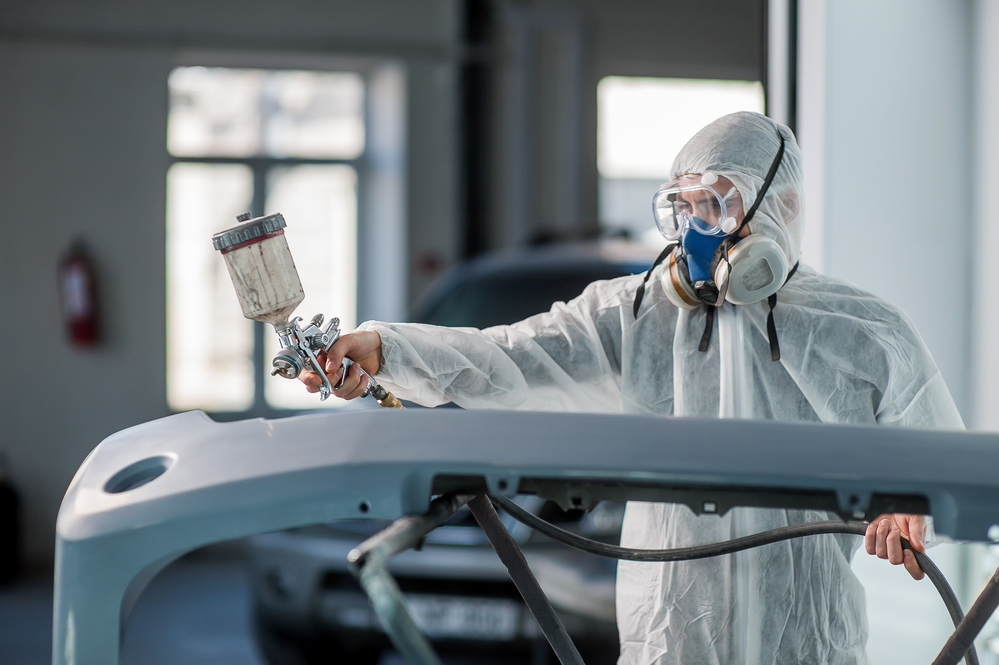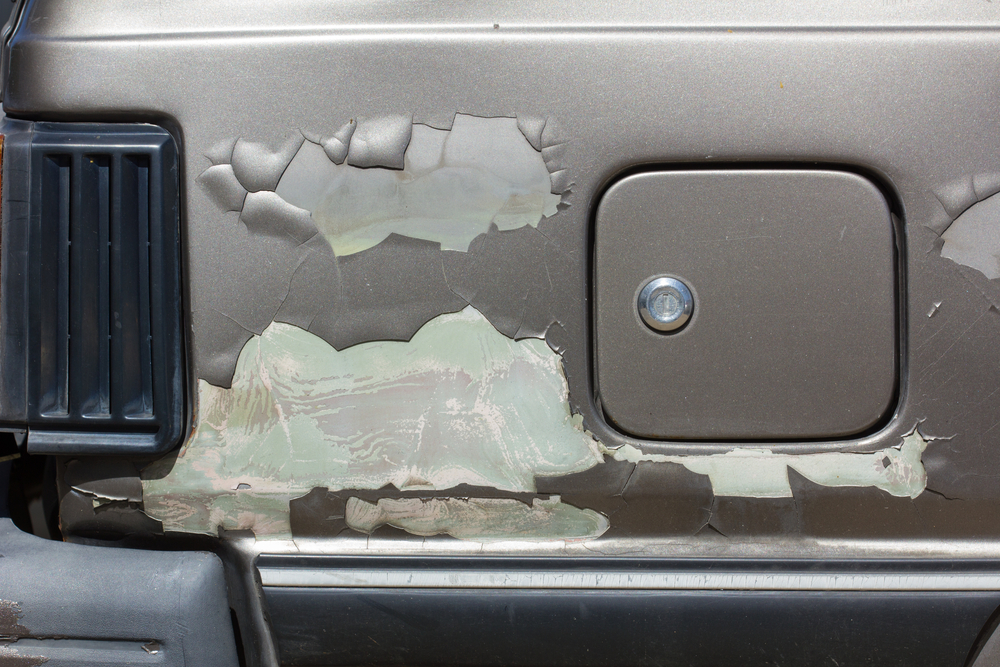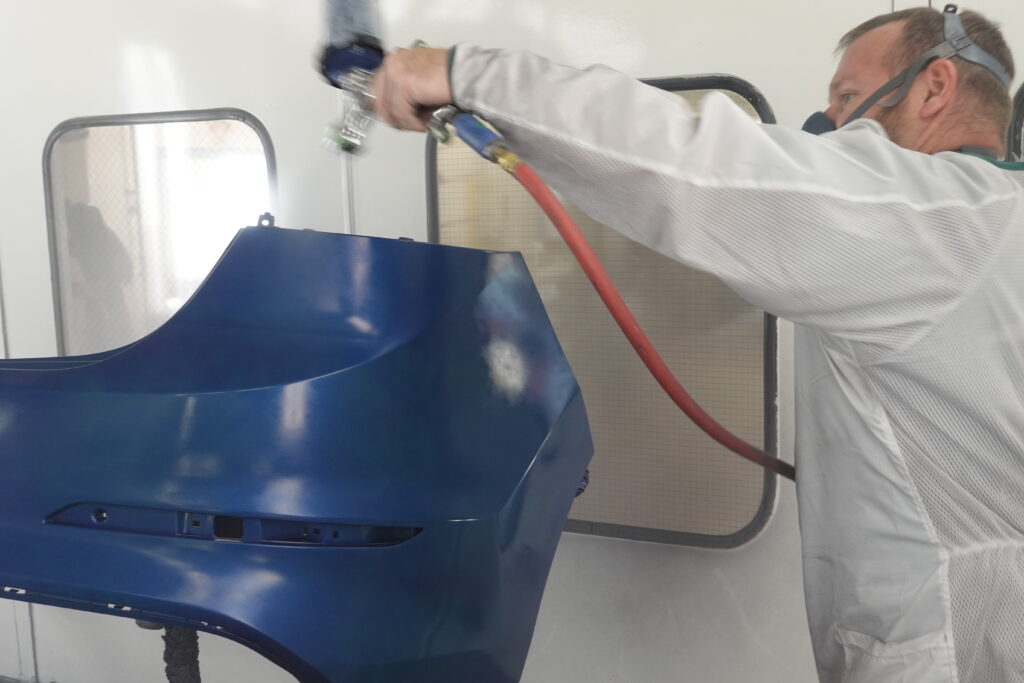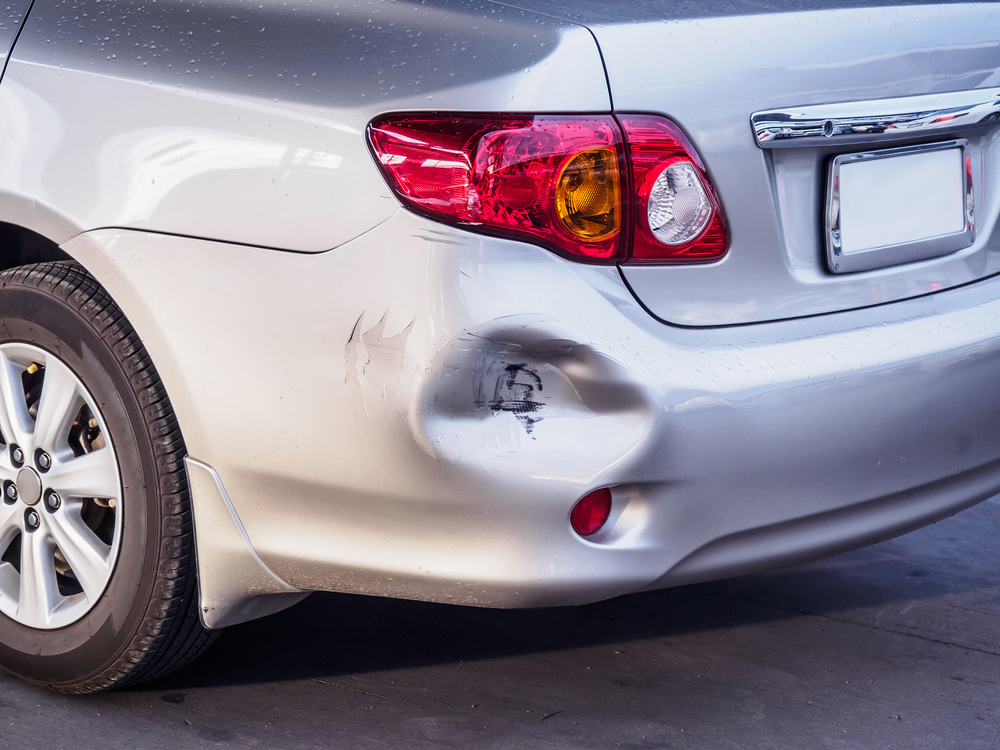Using your vehicle in Sewell, NJ inevitably means that it is going to gain some wear and tear. Even if you do not get into an accident, the paint on your vehicle may start looking damaged. When this happens, you may want to consider auto body paint repair. Auto body paint repair is a process used to restore the appearance of a vehicle’s exterior by fixing imperfections in the paint. What happens during auto body paint repair? Let’s find out.
What Types of Damage Can Auto Body Paint Repair Fix?
Auto body paint repair can be used to address various damages to a vehicle, including the following:
Scratches
Scratches on the vehicle’s paint can occur due to various reasons, such as contact with branches, keys, or other objects. Auto body paint repair can involve sanding down the affected area, applying primer, matching the paint color, and then carefully applying new paint to blend in with the surrounding area.
Chips
Paint chips can occur when rocks, gravel, or other debris hit the vehicle’s surface. These chips can expose the metal underneath to rust and corrosion if left untreated. Auto body paint repair for chips typically involves filling in the damaged area with touch-up paint or a resin filler, sanding it smooth, and then applying primer and paint to restore the finish.
Rust
Rust is a common issue, especially in areas with harsh climates or high humidity. Auto body paint repair for rust involves removing the rusted metal, treating the affected area with rust inhibitors, filling in any holes or pits with body filler, and then priming and repainting the surface to prevent further corrosion.
Paint Fading
Over time, exposure to sunlight and environmental factors can cause the vehicle’s paint to fade and lose its luster. Auto body paint repair for faded paint typically involves polishing and buffing the surface to remove oxidation and restore the paint’s shine, followed by applying a protective sealant or clear coat to enhance durability and UV protection.
How is Paint Matched?
When you bring your vehicle in to have its paint repaired, you may find yourself fretting over the color. How will the collision repair shop in Sewell ever match the color perfectly? One of the benefits of going to a professional auto body repair shop is that the technicians have tools and techniques to accurately match the paint color of your vehicle to a replacement.
The technician starts by visually inspecting the vehicle’s paint to identify the color, shade, and any variations caused by factors such as age, exposure to sunlight, or previous paint repairs. Part of this inspection is to check the paint code, which is often found on a sticker in the door jamb, trunk, or glove compartment. This code makes it easier for the technician to successfully match the paint.
Other advanced color matching tools, such as spectrophotometers or colorimeters, will be used to confirm the color required. These devices analyze the color spectrum and provide digital readings to identify the exact hue, saturation, and brightness of the paint.
Once the color is determined, the technician uses computerized paint mixing systems to create a custom paint mixture that matches the measured color. These systems allow for precise adjustments to achieve an accurate color match, taking into account factors such as metallic flakes and pearl finishes. The technician will perform a spray-out test before applying the color to the car, ensuring that the color is the same as what is on the vehicle.
What Happens During Auto Body Paint Repair?
During auto body paint repair in Sewell, NJ, the process typically involves several steps to restore the vehicle’s exterior appearance. Here is an overview of the steps involved:
1. Assessment and Evaluation
The first step is to assess the extent of the damage to the vehicle’s paint. A trained technician will examine the scratches, dents, or other imperfections to determine the best course of action for repair. They will then provide an estimate for the cost and timeframe of the repair work.
2. Surface Preparation
Before applying any new paint, the damaged area must be properly prepared. This involves cleaning the surface to remove dirt, grime, and any loose paint. The area may also be sanded down to create a smooth surface for the new paint to adhere to.
3. Masking and Priming
To protect surrounding areas from overspray, the technician will carefully mask off sections of the vehicle that do not require painting. This ensures that only the damaged area is painted and prevents unnecessary mess and cleanup.
If necessary, a primer may be applied to the repaired area to promote paint adhesion and ensure a smooth finish. The primer helps to seal the surface and provides a base for the paint to adhere to.
4. Paint Matching
Using advanced color matching technology, the technician will match the color of the existing paint to ensure a seamless repair. This may involve custom mixing paint to achieve the perfect color match for the vehicle.
5. Paint Application
Once the surface is prepared and the paint is matched, the technician will carefully apply the new paint to the damaged area. This may be done using a spray gun or other painting equipment to achieve an even coat and smooth finish.
6. Drying and Curing
After applying the paint, it must be allowed to dry and cure properly. Depending on the type of paint used, this may involve air drying or baking the vehicle in a specialized paint booth to accelerate the curing process.
7. Buffing and Polishing
Once the paint has dried and cured, the technician will buff and polish the repaired area to blend it seamlessly with the surrounding paint. This helps to restore the vehicle’s glossy finish and ensure a professional-looking result.
8. Final Inspection
Before returning the vehicle to the customer, a final inspection is conducted to ensure that the paint repair meets quality standards. Any remaining imperfections are addressed, and the vehicle is cleaned and detailed before being returned to the customer.
Contact a Auto Collision Repair Shop in Sewell, NJ Today
Overall, auto body paint repair is a detailed process that requires skill and precision to achieve high-quality results and restore the appearance of a vehicle’s exterior. Whether it’s a small scratch or significant damage, addressing paint imperfections promptly can help maintain the vehicle’s value and aesthetic appeal.
If you are looking for paint repair in Sewell, NJ, consider Elmer’s Auto Body. With our three locations to serve South Jersey and hundreds of satisfied customers, it is no wonder that we are among the top-rated auto body shops in New Jersey. Give us a call today or fill out the online form to schedule an appointment.

